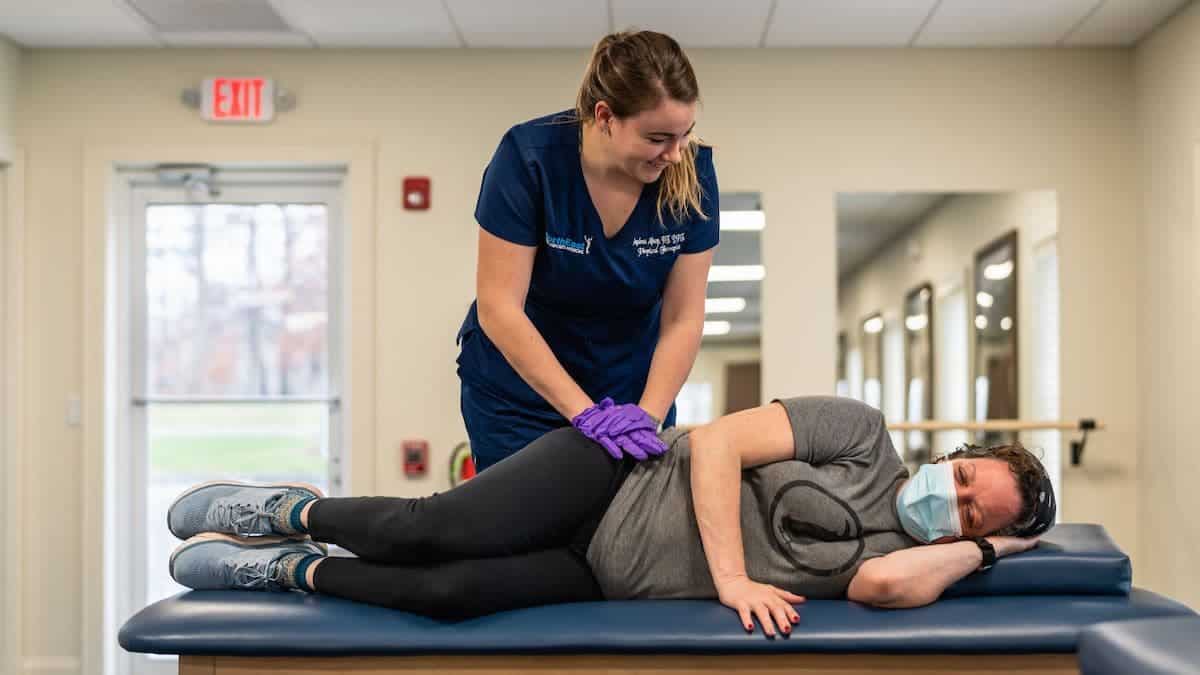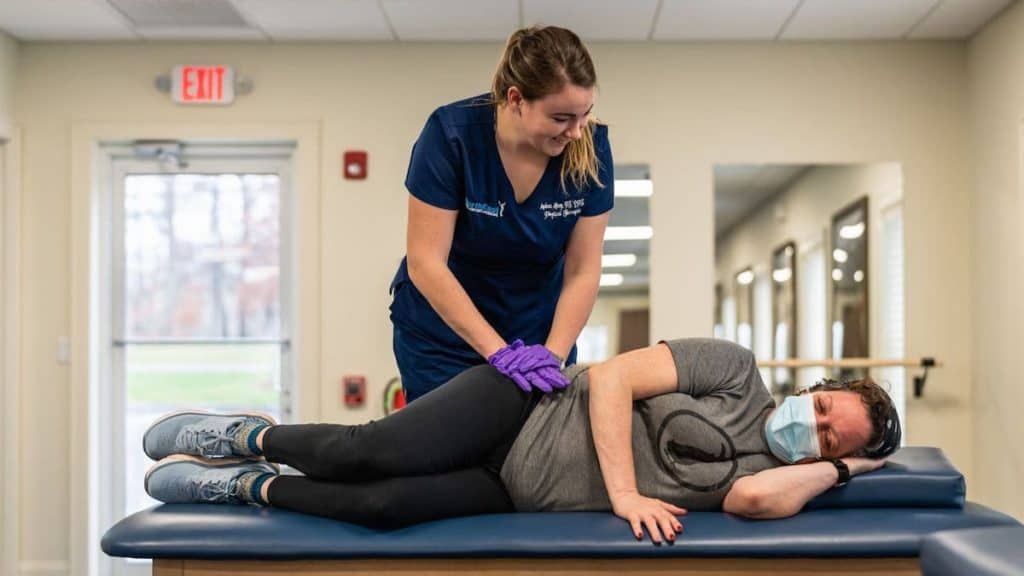
If you have chronic pain or need help recovering from an injury, your doctor may recommend physical therapy on its own or in conjunction with other treatment options. At Northeast Spine and Sports Medicine, we have experienced physical therapists available to assess your needs and develop a customized treatment plan for pain management. Here's what to expect from physical therapy when you come to Northeast Spine and Sports.
What Is Physical Therapy? How Does it Work?
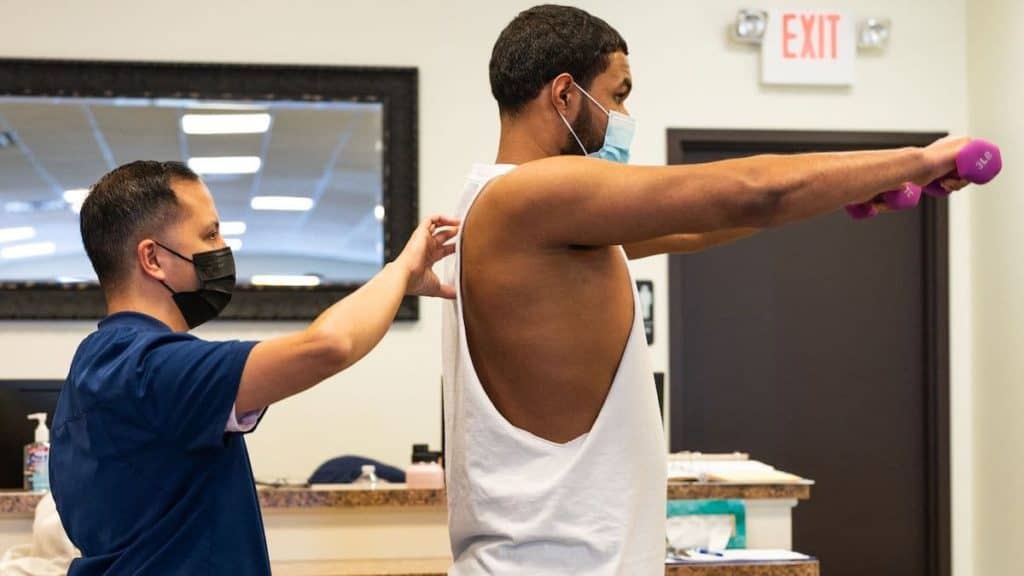
Physical therapy is a medical treatment designed to relieve pain and improve physical functioning. A physical therapist receives extensive education in human anatomy, exercise physiology, biomechanics and related topics, giving them a strong foundation for assessing patients and determining what innovative forms of PT are likely to meet their needs. Physical therapists also learn how to use ultrasound, electrical stimulation and other therapies to provide pain relief, improve flexibility and restore lost function.
These are just a few of the pain management and recovery services provided by physical therapists:
- Balance/gait training: Balance and gait training help people with neuromuscular disorders or injuries affecting the lower part of the body improve their ability to walk. This type of physical therapy may include walking on a treadmill, standing on one leg or learning to use a cane, walker or other assistive devices.
- Strength training: Injuries and chronic illnesses often cause muscle atrophy or muscle weakness. Strength training addresses these symptoms by strengthening the muscles in the affected area.
- Massage: As part of a physical therapy program, massage eases musculoskeletal pain, improves circulation and increases range of motion, all of which can help you recover from an injury or reduce pain caused by a chronic illness.
- Stretching: Stretching relaxes the muscles, making it an important part of a PT program designed to increase your range of motion and help you reach your flexibility goals.
- Heat/cold therapy: Heat therapy and cold therapy both help people recover from injuries, but they work in different ways. Heat therapy relaxes the muscles and increases blood flow, while cold therapy reduces inflammation by reducing blood flow to the injured area.
- Ultrasound: Low-intensity ultrasound therapy reduces muscle stiffness and promotes healing, making it effective for treating injuries to the muscles, ligaments and tendons.
- Electrical stimulation: During electrical stimulation therapy, a physical therapist applies a weak electrical current to the injured area. The current reduces pain, strengthens the muscles and improves circulation, speeding up healing.
How Do You Know if You Need Physical Therapy?
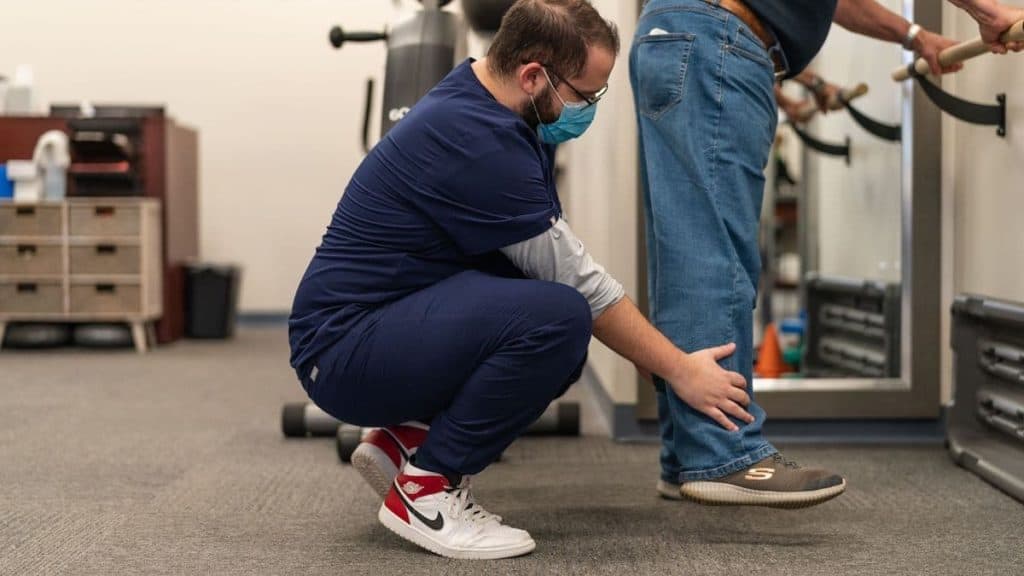
Many people can benefit from physical therapy, but PT is especially helpful for the following:
- Chronic joint or muscle pain
- Musculoskeletal injuries
- Sports-related injuries
- Pain or loss of function due to recent surgery
When you come to your first appointment at Northeast Spine and Sports Medicine, one of our experienced physical therapists will conduct a thorough assessment to determine the type of treatment you need. During this first appointment for assessment, your PT will ask questions and perform a physical exam, giving them information about these aspects of your health and physical functioning:
- Strength: In a medical sense, strength is your ability to lift and move objects. Strength is important for everything from carrying groceries to picking up items around the house.
- Range of motion: Range of motion refers to how far you can stretch each body part. If you're injured, you may not be able to stretch as far as you normally can. Your PT needs to know about any limitations before developing a treatment plan.
- Joint mobility: Some injuries cause limited joint mobility, or a lack of movement around a joint. Good joint mobility is essential for maintaining your posture and engaging in all kinds of movements, so it's important for your PT to determine whether you have any mobility issues.
- Flexibility: Flexibility and range of motion are closely related, but they're not exactly the same. Flexibility refers to a joint's ability to move through a range of motions without pain.
- Pain level: Before developing a treatment plan, a physical therapist needs to know where you have pain and how severe the pain is. For example, the treatment method for moderate knee pain is very different from the therapy for neck pain. They may ask you to rate your pain on a scale of 1 to 10 or tell them what makes the pain better and what makes the pain worse.
- Balance/agility: Balance refers to your ability to distribute your weight evenly, so you can stand up and walk without falling, while agility is the ability to move quickly and with ease. Your PT needs to know if you have any balance or agility issues to ensure they choose appropriate exercises for your treatment plan.
- Neurological function: Your brain, spinal cord and nerves play an important role in your ability to walk, bend and perform other movements. A physical therapist needs to know how well your nervous system functions.
- Cardiovascular function: The heart is the most important muscle in the body. If you have any problems with your heart or blood vessels, your PT may need to modify your treatment plan.
What Are the Benefits of Physical Therapy?
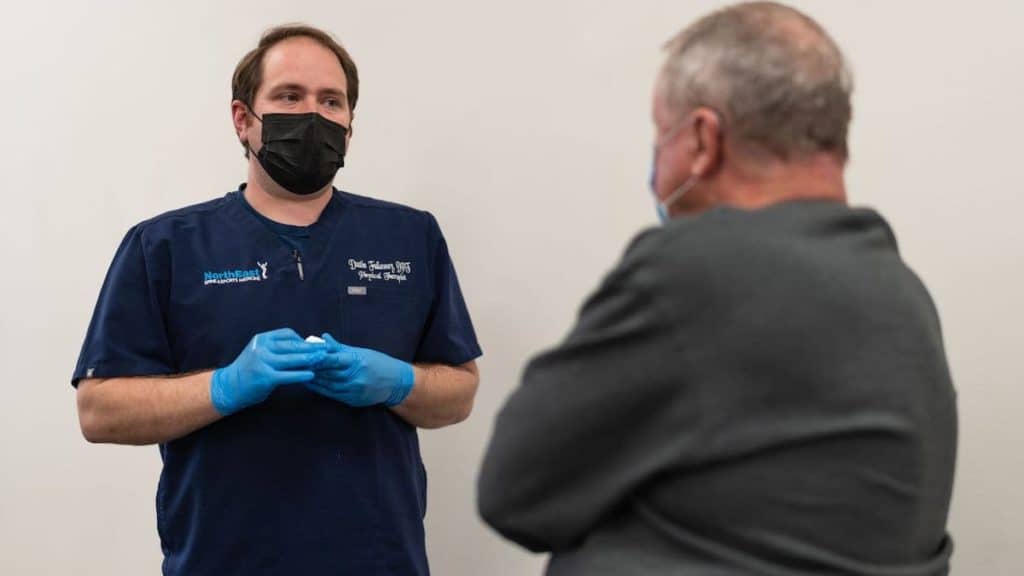
If you're wondering what to expect from physical therapy, you may be surprised to learn how many benefits this type of treatment offers, especially for untreated pain. Physical therapy has many benefits for athletes, people with acute injuries and people who've had invasive procedures. These are just a few of the most important benefits of physical therapy exercises and other PT services:
- Reduced recovery time: Physical therapy reduces the amount of time it takes to recover from injuries, allowing you to return to your normal activities as fast as possible.
- Drug-free pain management: In some cases, lingering pain occurs due to a lack of movement. When you don't move around as much as you should, your muscles don't receive adequate blood flow. This causes pain and discomfort. Physical therapy gets you moving, relieving pain without the use of addictive pain medications.
- Increased mobility: PT increases your flexibility and range of motion, increasing your mobility and making it easier to do things you enjoy.
- Improved blood flow: Heat therapy and other PT treatments increase blood flow, improving your circulation and making it easier for your body to repair damaged tissues.
- Increased muscle strength: The stronger you are, the more activities you can perform without assistance. Physical therapy helps strengthen the muscles, increasing your independence.
- Improved sports performance: When you take care of your body, it's easier to run, jump and perform other movements. PT helps athletes recover from sports-related injuries and improve their overall performance.
How Do You Prepare for Your Physical Therapy Session?
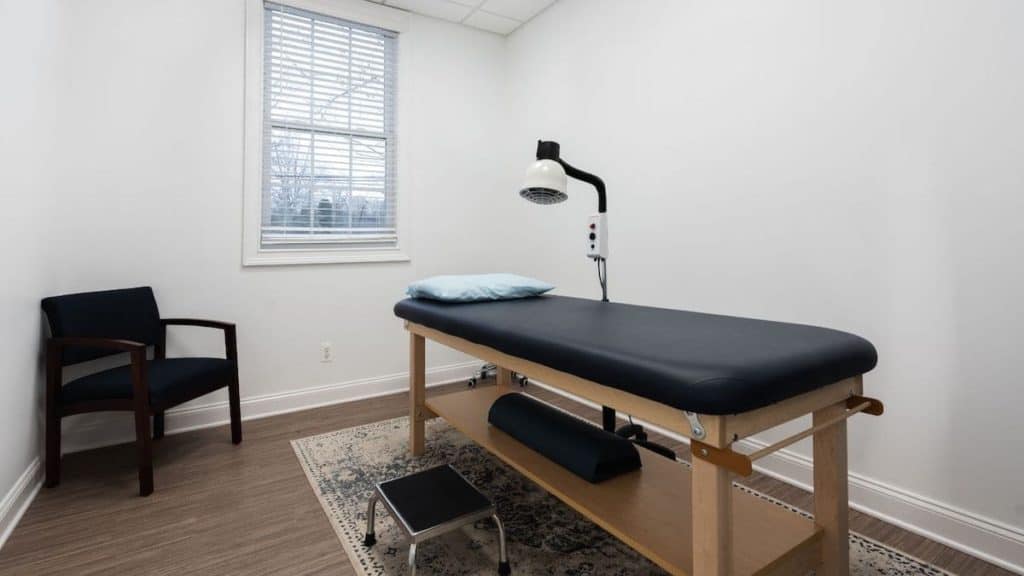
You should wear loose, comfortable clothing that makes it easy for your physical therapist to access the problem area. If you have an ankle injury, for example, wear shorts or pants with cuffs that are loose enough to roll up if your PT recommends ultrasound, heat therapy or cold therapy. You should also be prepared to provide information about your injury, illness or recent surgery to help the PT determine which series of treatments you need. If you have questions, write them down beforehand.
How Long Does Physical Therapy Take?
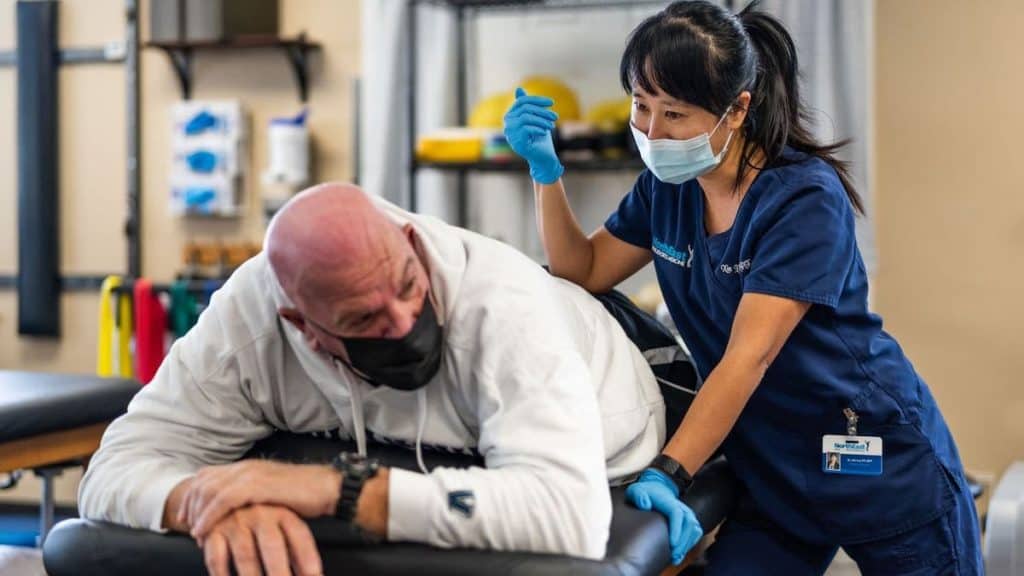
The length of a PT treatment program depends on many factors, including the type of injury or illness you have, your overall physical health and how committed you are to performing your PT exercises. Treatment plans aren't set in stone, so it's important to be flexible. As your needs change, your physical therapist will update your treatment plan accordingly. For example, as your painful condition improves, your PT may have you perform different exercises or exercise for longer periods of time. Once you and your physical therapist agree that you've reached your goals for mobility and function, you may decide to stop receiving PT.
How Long Are Physical Therapy Appointments?
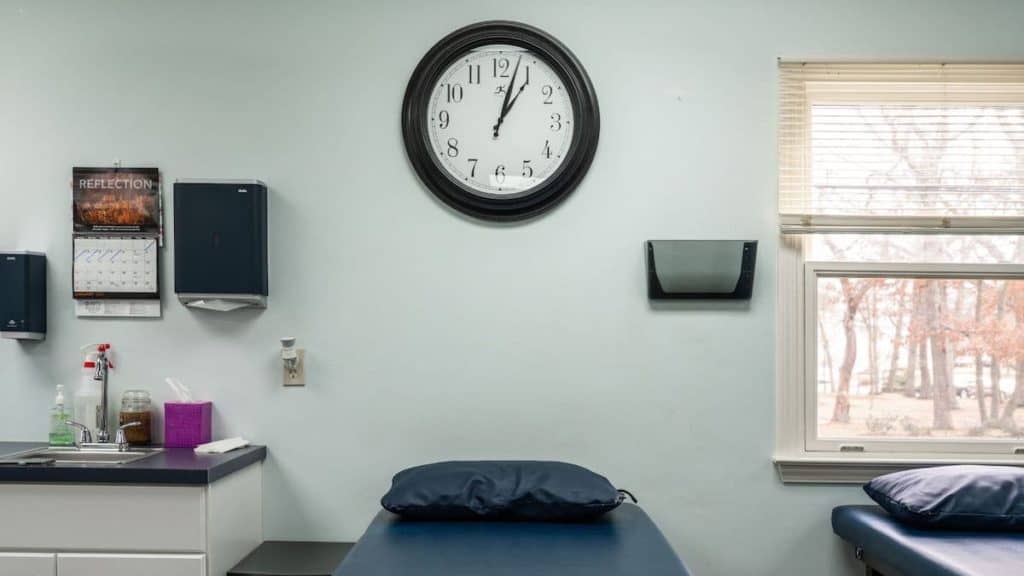
The length of a physical therapy appointment depends on your needs. A session typically lasts for 30 to 90 minutes, and you may need two to three sessions per week to reach your PT goals.
Why Choose Northeast Spine and Sports Medicine as Your Physical Therapy Clinic?
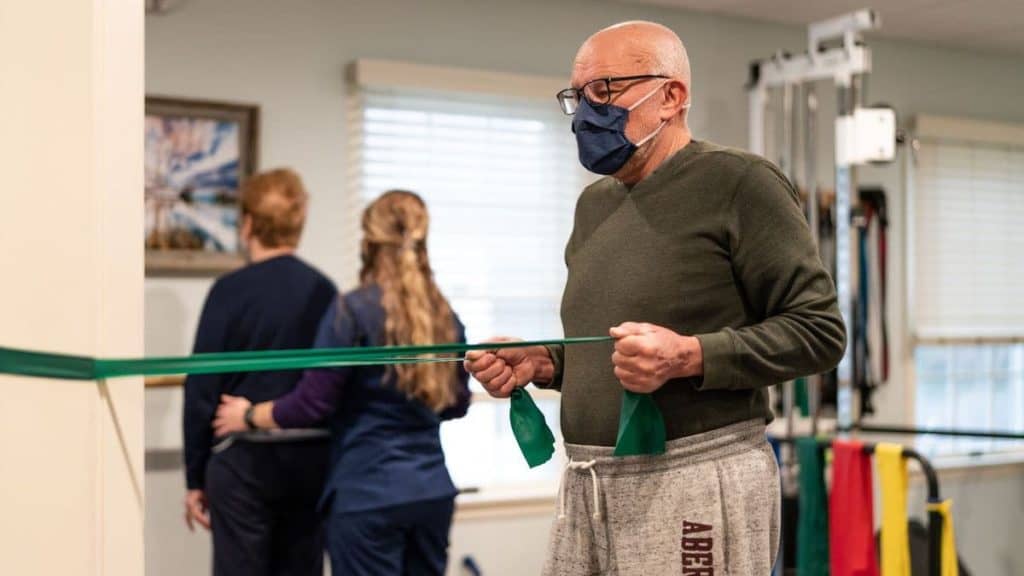
Northeast Spine and Sports Medicine provides world-class care and has a team of expert physical therapists available to attend to your needs. These are just a few of the benefits of coming to Northeast Spine and Sports Medicine for physical therapy services.
Physical Therapy Experts
Northeast Spine and Sports has 20 physical therapists across multiple locations. Every PT on staff has extensive experience providing hands-on care to people recovering from injuries, illnesses and recent surgical procedures. NESSM also has seven other specialties, including chiropractic treatments, acupuncture therapy and more, giving you access to 63 expert providers across all locations.
Comprehensive Patient Care
NESSM takes a multidisciplinary approach to managing pain and helping patients regain as much function as possible. In addition to our physical therapists, we have a team of pain management experts with experience developing comprehensive treatment plans. Depending on your needs, your treatment plan may include physical therapy, acupuncture and other comprehensive treatment options. Coming to NESSM for these services eliminates the need to visit multiple providers, making it more convenient to get the care you need.
Custom Treatment Plans
At NESSM, we don't take a one-size-fits-all approach to physical therapy. Based on the results of your initial assessment, we develop custom physical therapy treatment plans to address your unique needs. Because we take a multidisciplinary approach to pain management, your custom treatment plan may include exercises, ultrasound, massage therapy, acupuncture and other services to ease pain and increase your mobility for everyday function. We'll also adjust your treatment plan any time your needs change, ensuring you receive exactly the right combination of services.
Start Managing Your Pain Today
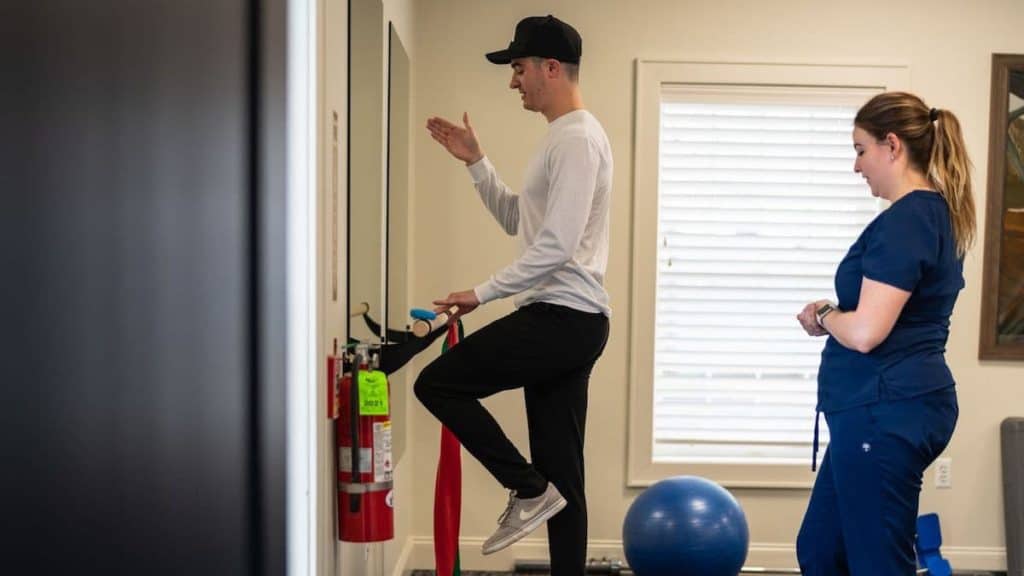
Now that you know what to expect from physical therapy, it's time to discover how it can improve your life. To schedule an initial evaluation, contact Northeast Spine and Sports Medicine at (732) 653-1000.
